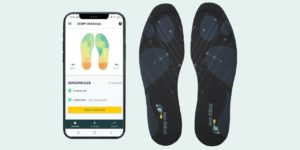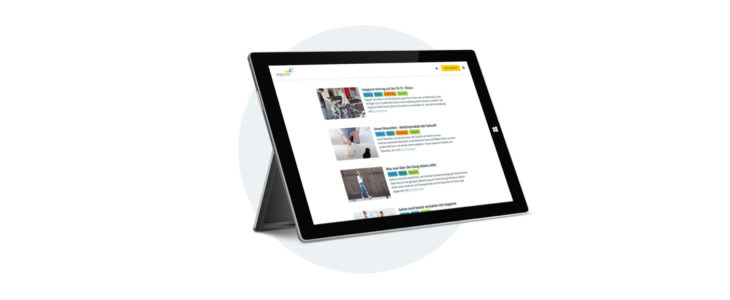New concept for partial weight-bearing and load management in rehab: Now available for IOS users

In case of injury or disease of the musculoskeletal system, rehabilitation with partial weight-bearing is a common and effective therapy method. The affected musculoskeletal structures or implants are gently mobilized. However, one of the biggest problems is the correct adherence to the load limits. The app STAPPONE Rehab is a comprehensive, innovative solution and is now also available for IOS!
Studies confirm that early mobilization accelerates the healing process and leads to improved functionality.¹ Mobilization with partial weight-bearing shows clear advantages compared to immobilization, as the “original stability of tendons, ligaments and bones” can be preserved. Other benefits include better blood flow to the tendons, as well as earlier alignment and remodeling of collagen fibers. “²
However, in addition to numerous positive aspects, partial weight-bearing faced fundamental problems during the actual execution.
Inaccurate control of partial weight-bearing
Applying the correct weight is the biggest challenge for patients. Without any reference, it is nearly impossible to stay within the prescribed load limits. Until now, there have been three methods, but all of them are flawed.
- Subjective assessment by a physician: In this method, the physician checks the load management in a clinical examination with the naked eye. This is very imprecise and purely subjective.
- Personal scales: The patient applies pressure to the affected leg several times on a personal scale to learn how the correct load feels. “This method already provides more concrete data about the pressure load and is objective. However, a scale’s accuracy is limited and can only reflect the static situation.³
- Force plates: They provide accurate dynamic measurement, but are complicated, complex to operate, more expensive to purchase and it is difficult to interpret the data.
Nearly “half of the reproducibility studies [show] that it was not possible for subjects to maintain the specified partial weight-bearing. “4, especially after discharge.
The revolution of partial weight-bearing
Portable measurement systems that provide live biofeedback are totally different: “In contrast, in the studies on the topic of [live-]feedback, 90% of the time the subjects’ compliance with partial weight-bearing was improved by feedback training.” 5
STAPPONE Rehab offers the innovative solution. It consists of the intelligent stappone sensor soles and the corresponding app. The app is downloaded from the AppStore or Google Playstore to an Android smartphone or iPhone. The soles are simply inserted into comfortable shoes and connected to the app. After setting the load limit, it provides live visual, audible, and/or haptic biofeedback when under- or overloaded. Furthermore, STAPPONE Rehab is mobile, wireless and easy to use.
STAPPONE Rehab’s advantage is that it can be dynamically integrated into everyday life: “The advantage of portable measurement systems, namely that they can also measure dynamically and in the patient’s everyday situations, has proven to be very effective. Patients receive feedback with every step, which leads to a high exercise density and the feeling of the correct load is consolidated more quickly. In addition, the patient receives feedback in realistic everyday situations such as walking or climbing stairs. So, there is no need to transfer what is learned from the patient. “ 6
This is exactly where STAPPONE Rehab comes in. It gives patients the security to load correctly and motivates, because with the correct adherence to the partial load, the rehabilitation is shortened by up to 25%!
Do you have questions about the use of STAPPONE Rehab? Contact us! We are always at your disposal.
Find us on LinkedIn and become part of our community! We keep you updated about stappone, medicine and technology!
¹ Klöpfer-Krämer · P. Augat, S. 188
² Klöpfer-Krämer · P. Augat, S. 188
³ Klöpfer-Krämer · P. Augat, S. 188
4 Klöpfer-Krämer · P. Augat, S. 190
5 Klöpfer-Krämer · P. Augat, S. 190
6 Klöpfer-Krämer · P. Augat, S. 190

